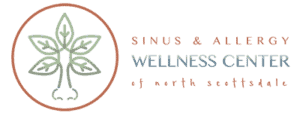ENT Guide to Fall: Managing Allergy Triggers During Harvest Season
ENT Guide to Fall: Managing Allergy Triggers During Harvest Season
For many, fall brings cozy sweaters, pumpkin-flavored treats, and beautiful autumn leaves. But if you’re someone who suffers from seasonal allergies, fall can also mean dealing with sniffles, itchy eyes, and sinus headaches. As leaves fall and farmers begin harvesting, allergens like pollen, mold, and dust are on the rise. Knowing what triggers to look out for and how to manage them can help you stay one step ahead this season. Here’s your guide to avoiding the worst of fall allergies and breathing easier.
Why Fall Allergies Flare Up
In fall, several key allergy triggers come into play. Ragweed, a plant that releases pollen in late summer and fall, is one of the top offenders. Even if ragweed doesn’t grow near you, its pollen can travel hundreds of miles on the wind, causing symptoms far and wide. Harvest activities like plowing and gathering crops also stir up dust and mold, both of which are common fall allergens.
- Ragweed: The most common fall allergen, ragweed affects millions of people every year and can cause symptoms like sneezing, itchy eyes, and runny nose.
- Mold Spores: Mold grows on fallen leaves and in damp areas. When these leaves get disturbed, mold spores are released into the air, which can trigger allergy symptoms.
- Dust Mites: As temperatures drop, we spend more time indoors where dust mites thrive. While they’re present year-round, they can flare up in fall when heating systems kick on, stirring up dust in homes.
Tips for Managing Fall Allergies
There’s no way to completely avoid fall allergens, but a few smart habits can go a long way in helping you manage symptoms:
- Check Daily Allergy Forecasts – Knowing when pollen or mold levels are high can help you decide when to avoid outdoor activities. Many weather apps and websites provide daily allergy updates, so you can plan ahead to avoid high-allergy days.
- Rinse Away Pollen and Dust – Showering at night can help rinse off any pollen or dust that may have settled on your skin or hair during the day. Changing clothes after outdoor activities also helps keep allergens from lingering in your home.
- Keep Windows Closed – As tempting as it is to let the cool fall air in, open windows also let in pollen and mold. Use air conditioning instead and change the filters regularly to keep indoor air clean.
- Use a HEPA Filter – Air purifiers with HEPA filters can capture dust, pollen, and mold spores in the air. Consider using one in rooms where you spend a lot of time, like your bedroom or living room.
- Consult an ENT for Persistent Symptoms – If your fall allergies are severe, an ENT (ear, nose, and throat) specialist can help. They may recommend allergy testing to identify your specific triggers or prescribe treatments like nasal sprays or allergy shots for longer-term relief.
When to See a Healthcare Provider
While many people can manage seasonal allergies on their own, sometimes symptoms become overwhelming or even lead to other issues, like sinus infections. If you notice that your symptoms persist beyond allergy season, or if you frequently experience sinus pain, headaches, or difficulty breathing, it may be time to consult an ENT. At Sinus & Allergy Wellness Center, we can help rule out any complications and provide targeted treatments.
Don’t Let Fall Allergies Get You Down
Fall allergies can be frustrating, especially when you just want to enjoy the season. But with a few smart steps, you can manage your symptoms and make the most of autumn. By keeping an eye on your triggers and taking action early, you’ll have a better chance of breezing through fall without the usual allergy headaches. And remember, if you’re struggling, you’re not alone—an Sinus & Allergy Center is just a call away to help you find relief and breathe easy this season.
Disclaimer:
The information provided in this article is for informational and educational purposes only and does not constitute medical advice. It is not intended to diagnose, treat, cure, or prevent any disease or medical condition. Always seek the guidance of your physician or other qualified healthcare provider with any questions you may have regarding a medical condition or treatment.
Results may vary: Treatment outcomes and health experiences may differ based on individual medical history, condition severity, and response to care.
Emergency Notice: If you are experiencing a medical emergency, call 911 or seek immediate medical attention.




